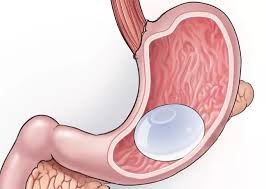
Weight loss is a journey that requires dedication, effort, and often a comprehensive plan that includes diet, exercise, and sometimes medical intervention. Among the various weight loss procedures available today, Endoscopic Intragastric has emerged as a revolutionary and minimally invasive option. This procedure offers a new approach to weight management, providing effective results with fewer risks compared to traditional surgical methods. In this article, we’ll explore what Endoscopic Intragastric is, how it works, its benefits, potential risks, and what to expect during and after the procedure.
What is Endoscopic Intragastric?
Endoscopic Intragastric is a non-surgical weight loss procedure that involves the insertion of a balloon or other device into the stomach through an endoscope. This balloon occupies space in the stomach, leading to a feeling of fullness and reduced food intake. The procedure is designed for individuals who have not been able to achieve significant weight loss through diet and exercise alone and are looking for a less invasive option than traditional bariatric surgery.

How the Procedure Works
The Endoscopic Intragastric procedure typically begins with the patient being sedated. A flexible tube, known as an endoscope, is then inserted through the mouth and into the stomach. The endoscope is equipped with a camera, allowing the physician to see inside the stomach and guide the placement of the balloon or other device.
Once the balloon is in place, it is filled with a sterile saline solution or gas, expanding to take up space in the stomach. The procedure usually takes about 20 to 30 minutes, and patients can often go home the same day.
Who is a Candidate for Endoscopic Intragastric?
Endoscopic Intragastric is not suitable for everyone. It is typically recommended for individuals who have a Body Mass Index (BMI) of 30 to 40 and have not been successful with other weight loss methods. It may also be an option for those who are not candidates for more invasive weight loss surgeries due to health concerns or personal preference.
Factors to Consider
Before undergoing the Endoscopic Intragastric procedure, several factors need to be considered:
- Medical History: The patient’s overall health and medical history will be evaluated to ensure they are a suitable candidate.
- Weight Loss Goals: The procedure is intended for individuals looking to lose a moderate amount of weight, typically between 10% to 20% of their total body weight.
- Commitment to Lifestyle Changes: Successful weight loss with Endoscopic Intragastric requires a commitment to a healthy lifestyle, including a balanced diet and regular exercise.
Benefits of Endoscopic Intragastric
One of the main advantages of Endoscopic Intragastric is that it is a minimally invasive procedure, which means there is no need for large incisions, reducing the risk of complications and speeding up recovery time. Here are some other key benefits:
Non-Surgical Procedure
Because Endoscopic Intragastric does not involve surgery, there is no need for general anesthesia or a lengthy hospital stay. Most patients can return to their normal activities within a few days.
Effective Weight Loss
Studies have shown that Endoscopic Intragastric can lead to significant weight loss. On average, patients may lose about 10% to 20% of their total body weight within six months to a year after the procedure.
Improved Health Conditions
Losing weight through Endoscopic Intragastric can lead to improvements in various obesity-related health conditions, such as type 2 diabetes, hypertension, and sleep apnea.
Adjustable and Reversible
Unlike some surgical weight loss procedures, Endoscopic Intragastric is reversible. If necessary, the balloon can be removed, and the stomach will return to its normal size. Additionally, the balloon can be adjusted to better suit the patient’s needs.
Risks and Considerations
While Endoscopic Intragastric is generally safe, like any medical procedure, it comes with potential risks and side effects. It is important to discuss these with a healthcare provider before deciding to undergo the procedure.
Common Side Effects
Some of the more common side effects of Endoscopic Intragastric include nausea, vomiting, and abdominal pain, especially in the first few days after the procedure. These symptoms are typically temporary and can be managed with medication.
Potential Complications
In rare cases, more serious complications can occur, such as balloon deflation, which could lead to an intestinal blockage. There is also a risk of infection or injury to the stomach lining. However, these risks are relatively low compared to traditional weight loss surgeries.
Psychological Impact
The rapid weight loss associated with Endoscopic Intragastric can also have psychological effects. Some patients may experience body image issues or struggle with the adjustment to their new lifestyle. It is important to have a support system in place and seek counseling if needed.
The Procedure: What to Expect
Understanding what to expect during and after the Endoscopic Intragastric procedure can help alleviate any concerns and ensure a smoother experience.
Pre-Procedure Preparation
Before the procedure, patients will typically undergo a series of tests to ensure they are in good health and suitable candidates. This may include blood tests, imaging studies, and a thorough medical history review. Patients will also be advised to follow a special diet in the days leading up to the procedure.
During the Procedure
On the day of the procedure, the patient will be sedated, and the endoscope will be inserted through the mouth into the stomach. The balloon will then be placed and filled, a process that usually takes no more than 30 minutes. The patient will be monitored for a short time after the procedure before being allowed to go home.
Post-Procedure Care
After the procedure, patients will need to follow a liquid diet for a few days before gradually reintroducing solid foods. It is important to eat smaller, more frequent meals and avoid overeating to prevent discomfort. Regular follow-up appointments will be scheduled to monitor progress and make any necessary adjustments.
Life After Endoscopic Intragastric
The journey to weight loss doesn’t end with the Endoscopic Intragastric procedure. Maintaining weight loss requires a long-term commitment to healthy lifestyle changes.
Diet and Nutrition
A balanced diet is crucial for long-term success after Endoscopic Intragastric. Patients will typically work with a nutritionist to develop a meal plan that provides adequate nutrition while supporting weight loss goals. This may include focusing on high-protein, low-calorie foods and avoiding sugary or fatty foods.
Exercise and Physical Activity
Regular physical activity is essential for maintaining weight loss and improving overall health. Patients will be encouraged to engage in regular exercise, starting with light activities like walking and gradually increasing the intensity as they build strength and endurance.
Psychological Support
Weight loss can be an emotional journey, and it is important to have support along the way. Many patients benefit from counseling or support groups where they can share experiences and gain encouragement from others who are on a similar path.
Conclusion
Endoscopic Intragastric represents a significant advancement in the field of weight loss, offering a less invasive and effective option for those struggling with obesity. While the procedure is not a magic solution, it can provide the necessary support to achieve meaningful and lasting weight loss when combined with a healthy lifestyle. By understanding the benefits, risks, and commitment required, patients can make an informed decision about whether Endoscopic Intragastric is the right choice for their weight loss journey.